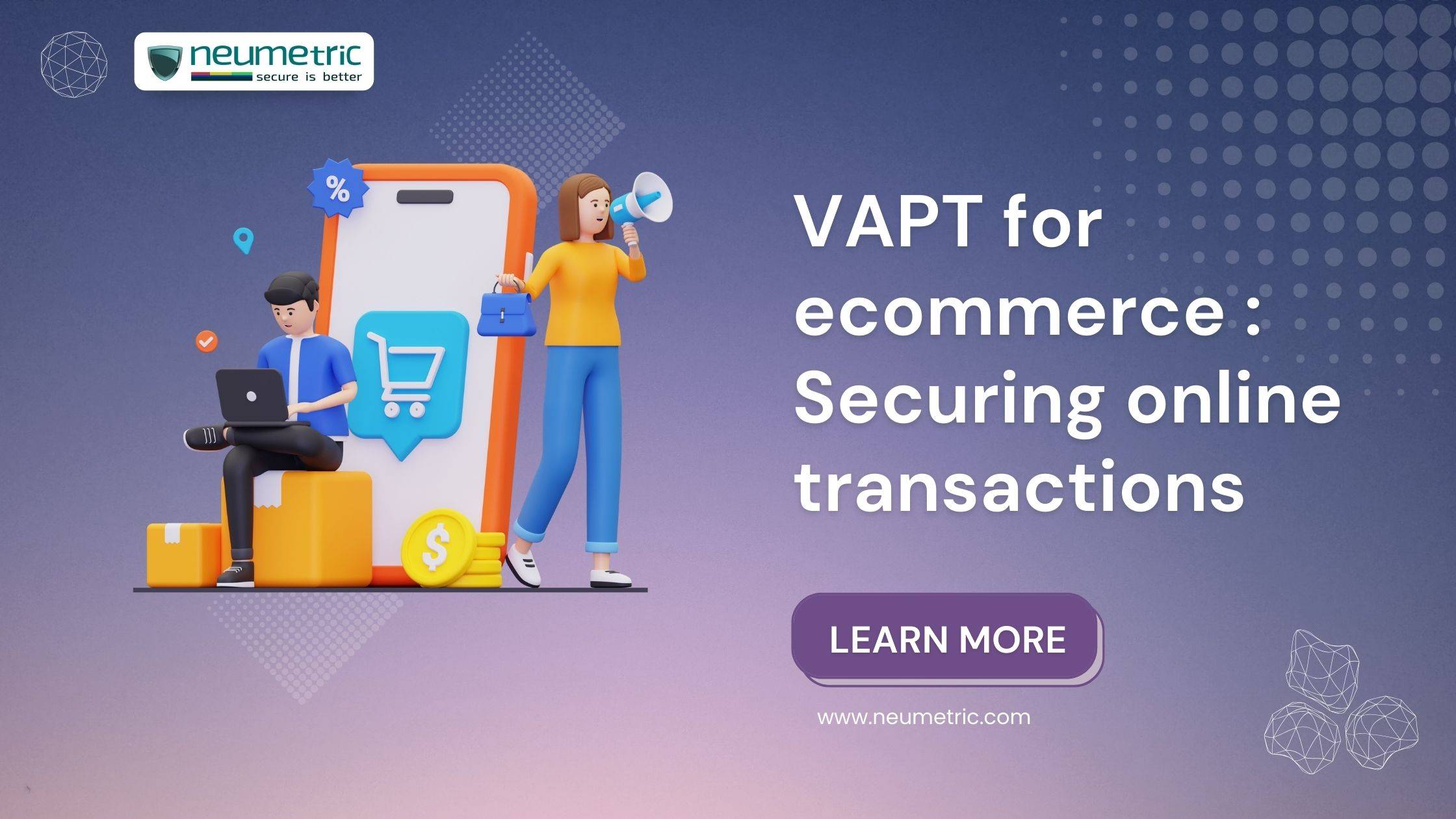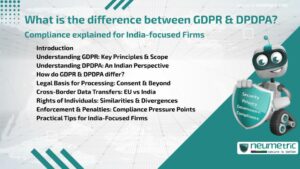Table of Contents
ToggleIntroduction
In the last decade, the digital marketplace has witnessed an unprecedented surge in e-commerce. With the convenience of online shopping, consumers have embraced this paradigm shift, leading to exponential growth in digital transactions. This meteoric rise in e-commerce has not only revolutionised the way we shop but has also intensified the need for robust security measures.
However, this rapid expansion in online retail comes with a looming concern: security threats. As the volume of online transactions escalates, so do the risks associated with cyber threats. Malicious actors continually probe e-commerce platforms, targeting sensitive customer information, financial data & transaction details. The significance of safeguarding these assets against cyberattacks cannot be overstated, as a single breach can potentially jeopardise customer trust, tarnish brand reputation & result in financial losses.
To counteract the growing threats in the digital space, a proactive & comprehensive approach to security is indispensable. VAPT is a systematic process that evaluates the security posture of e-commerce platforms, identifying vulnerabilities & assessing the effectiveness of existing security measures. VAPT plays a pivotal role in fortifying the security posture of e-commerce platforms, providing a proactive shield against evolving cyber threats.
Understanding e-commerce security challenges
E-commerce platforms serve as lucrative targets for cybercriminals due to the sheer volume of valuable data they handle. Understanding the specific threats they face is crucial for comprehending the gravity of security concerns:
- Data breaches: Among the most prevalent threats, data breaches occur when unauthorised entities gain access to sensitive customer information stored within e-commerce databases. This could encompass personal data, credit card details or login credentials. Such breaches not only compromise customer trust but also pose legal & financial liabilities for businesses.
- Payment fraud: E-commerce platforms are prime targets for payment fraud, where fraudsters exploit vulnerabilities in payment systems to conduct fraudulent transactions. This includes activities like card-not-present fraud, where stolen card details are used for unauthorised purchases, causing financial losses for both customers & businesses.
- Phishing attacks: Phishing remains a persistent threat, wherein cybercriminals employ deceptive tactics via emails, messages or fake websites to trick users into divulging sensitive information like passwords, financial data or personal details. E-commerce platforms often serve as bait for these attacks, leading to compromised customer accounts & potential financial loss.
The digital landscape isn’t just about securing against cyber threats; it’s also about adhering to stringent regulations & standards to safeguard customer data & ensure ethical business practices. Key compliance standards include:
- General Data Protection Regulation [GDPR]: This European Union [EU] regulation mandates strict protocols for handling & protecting the personal data of EU citizens. It requires e-commerce platforms to acquire explicit consent for data collection, ensure data security & promptly report data breaches.
- Payment Card Industry Data Security Standard [PCI DSS]: Specifically tailored for entities handling payment card information, PCI DSS outlines security requirements to protect cardholder data during transactions. Compliance ensures secure payment processing & reduces the risk of payment-related breaches.
Compliance with these regulations isn’t just about avoiding legal repercussions; it’s a testament to a company’s commitment to customer privacy & security.
Explaining VAPT in e-commerce
Vulnerability Assessment & Penetration Testing [VAPT] is a systematic approach employed to evaluate the security posture of e-commerce platforms comprehensively. It involves two core methodologies:
- Vulnerability Assessment: This process involves scanning & analysing the e-commerce infrastructure, applications & networks to identify potential weaknesses or vulnerabilities. These assessments employ various tools & techniques to pinpoint areas susceptible to exploitation by cyber threats.
- Penetration Testing: Also known as ethical hacking, penetration testing goes a step further by simulating real-world cyber attacks to exploit identified vulnerabilities in a controlled environment. Ethical hackers employ strategies to infiltrate systems & expose potential security flaws, providing insights into how a system might react to actual threats.
Importance of VAPT for e-commerce platforms
VAPT holds paramount importance in the realm of e-commerce security. With the constantly evolving threat landscape, conducting regular VAPT assessments is crucial to:
- Identify vulnerabilities: Proactively discovering vulnerabilities within the e-commerce infrastructure before malicious actors exploit them is fundamental to preemptive security measures.
- Protect customer data: Safeguarding sensitive customer information, such as payment details, personal data & transaction records, is imperative in maintaining customer trust & complying with data protection regulations.
- Prevent financial losses: By fortifying the security measures, e-commerce businesses can mitigate the risk of financial losses arising from data breaches, payment fraud or system downtime.
The advantages of implementing VAPT assessments for e-commerce platforms are manifold:
- Risk mitigation: Identifying & addressing vulnerabilities proactively significantly reduces the risk of cyber attacks & potential data breaches.
- Enhanced security: VAPT aids in strengthening the overall security posture of e-commerce platforms, ensuring a robust defence against evolving cyber threats.
- Compliance & trust: Meeting regulatory requirements & demonstrating a commitment to security builds trust among customers, thereby enhancing the brand’s reputation.
Key components of VAPT in e-commerce
Vulnerability Assessment
- Identifying weaknesses in e-commerce systems: Vulnerability assessment serves as the foundational step in evaluating e-commerce platforms for potential security loopholes. It involves a meticulous examination of the system’s infrastructure, applications & network components to identify vulnerabilities. These weaknesses can range from misconfigured settings & outdated software to unpatched vulnerabilities & weak encryption protocols. The goal is to comprehensively understand the vulnerabilities that could potentially be exploited by malicious actors.
- Tools & techniques used in assessments: Numerous sophisticated tools & techniques are employed in vulnerability assessments. These include automated scanning tools that scour through system components to detect vulnerabilities. Additionally, manual inspection by cybersecurity experts plays a crucial role in identifying nuanced vulnerabilities that automated tools might overlook. Techniques such as port scanning, vulnerability scanning & configuration assessment help in uncovering weaknesses that need to be addressed.
Penetration Testing
- Simulating cyber attacks: Penetration testing involves simulating real-world cyber attacks on the e-commerce infrastructure. Ethical hackers attempt to exploit vulnerabilities discovered during the vulnerability assessment phase. By imitating the strategies & tactics of potential attackers, penetration testing assesses the system’s resilience to actual threats.
- Ethical hacking approaches: Ethical hackers employ various approaches during penetration testing, which may include social engineering tactics, exploiting software vulnerabilities or manipulating configurations to gain unauthorised access. The goal is not to cause harm but to expose vulnerabilities & assess the system’s defence mechanisms.
- Reporting & remediation: Upon completion of penetration testing, a comprehensive report detailing identified vulnerabilities, exploitation methods & potential impacts is generated. This report serves as a roadmap for remediation efforts. The e-commerce platform’s security team utilises this information to prioritise & address vulnerabilities, patching systems, updating configurations & strengthening defences to mitigate the identified risks.
Best practices for conducting VAPT in e-commerce
Developing a well-defined security policy serves as the cornerstone for a proactive security approach:
- Risk assessment & policy creation: Begin by conducting a thorough risk assessment to understand the specific vulnerabilities & threats facing the e-commerce platform. Utilise this assessment to formulate a comprehensive security policy that outlines protocols, procedures & guidelines for secure operations.
- Clear guidelines & training: Ensure that the security policy is easily accessible & clearly communicated across the organisation. Regular training sessions & awareness programs help employees understand their role in maintaining security standards, fostering a culture of security consciousness.
- Scheduled vulnerability assessments: Implement routine vulnerability assessments to continuously identify & address new vulnerabilities. Regular scans & assessments help in staying ahead of potential threats.
- Frequent penetration testing: Conduct periodic penetration tests to simulate real-world attacks & assess the effectiveness of security measures. Regular testing helps in understanding evolving threats & adapting defences accordingly.
- Integrated security into development lifecycle: Foster a collaborative environment where security is integrated into the development lifecycle. Encourage continuous communication & collaboration between development & security teams to identify & mitigate vulnerabilities at an early stage.
- Agile security practices: Embrace agile methodologies to facilitate rapid responses to security concerns. Implementing DevSecOps practices ensures that security measures are ingrained throughout the development process.
- Timely application of security patches: Ensure prompt application of security patches & updates for all systems, software & applications used within the e-commerce infrastructure. Regularly monitor vendor notifications for security vulnerabilities & apply patches swiftly to mitigate risks.
- Systematic change management: Implement a systematic change management process to track, test & deploy updates & patches without disrupting critical operations. This minimises the window of exposure to potential vulnerabilities.
Conclusion
Throughout this discussion, the critical role of Vulnerability Assessment & Penetration Testing [VAPT] in fortifying e-commerce security has been underscored. In an era where digital transactions reign supreme, the integrity & security of e-commerce platforms are paramount. VAPT serves as a proactive shield against evolving cyber threats, encompassing vulnerability assessments & simulated cyber attacks through penetration testing. It’s an indispensable process to identify vulnerabilities, fortify defences & safeguard sensitive customer information.
Looking ahead, the future of e-commerce security holds both challenges & opportunities. As technology advances, so do the tactics of cybercriminals. Thus, the need for continuous innovation in security measures becomes imperative. Artificial Intelligence [AI] & Machine Learning [ML] are expected to play pivotal roles in enhancing VAPT processes, enabling automated threat detection & response. Continuous monitoring, adaptive security strategies & a collaborative approach between security experts & technology will define the future landscape of e-commerce security.
In conclusion, safeguarding e-commerce platforms against cyber threats requires a multi-faceted approach. VAPT stands as a foundational pillar in this defence, ensuring not only the protection of businesses but also the trust & confidence of consumers in the digital marketplace.
FAQ
Why is Vulnerability Assessment & Penetration Testing [VAPT] crucial for e-commerce platforms?
VAPT holds immense significance for e-commerce security as it acts as a proactive shield against cyber threats. Through meticulous vulnerability assessments & simulated cyber attacks (penetration testing), VAPT helps identify potential weaknesses within e-commerce systems. By fortifying these vulnerabilities, it enhances the platform’s defence against data breaches, payment fraud & phishing attacks. Ultimately, VAPT ensures the safety of sensitive customer information & fosters trust in online transactions.
How often should e-commerce businesses conduct VAPT assessments?
The frequency of VAPT assessments largely depends on the dynamic nature of cyber threats & the rate of changes within the e-commerce infrastructure. Ideally, businesses should conduct regular & periodic assessments. Vulnerability assessments should occur routinely to detect new vulnerabilities, while penetration testing should take place at least annually or whenever significant system updates or modifications occur. However, a tailored approach based on industry best practices, the scale of operations & regulatory requirements should dictate the specific assessment frequency.
What role does collaboration play in effective VAPT for e-commerce platforms?
Collaboration between development & security teams is paramount in ensuring a robust security posture. A cohesive partnership allows for seamless integration of security measures into the development lifecycle. By fostering constant communication & shared responsibility, these teams can identify & address vulnerabilities early on, minimising potential security risks. This collaborative approach enables the implementation of agile security practices & ensures that security measures are ingrained at every stage of development, ultimately enhancing the overall security of e-commerce platforms.





